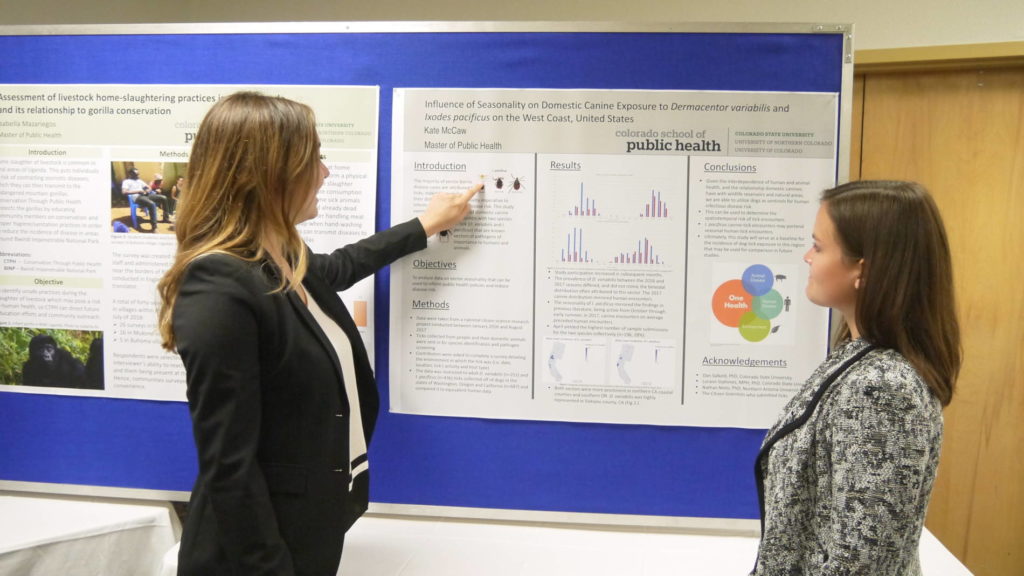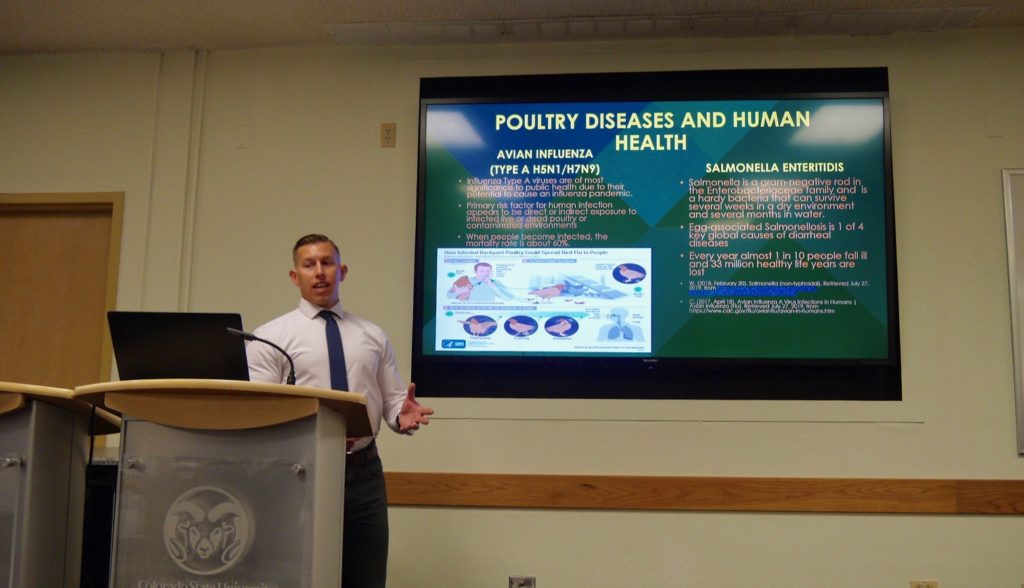Within each of the Master of Public Health concentrations at Colorado State University, students complete a capstone project which allows them to apply their learnings from the classroom to practical and research related public health issues. The Public Health Forum is where students present their capstone projects each semester to their peers, advisors, and the public. This summer’s presentations covered a wide range of subjects, with students from every concentration.
MPH Candidate Alyssa Thomas from the Public Health Nutrition concentration focused her capstone project on the Special Supplemental Nutrition Program for Women, Infants, and Children (WIC). WIC provides supplemental foods and nutrition education to low-income pregnant, breastfeeding, and postpartum women, as well as to infants and children. Participation in WIC is associated with positive health outcomes for young children, including improved diet quality and access to preventive healthcare. While eligible children can participate in the program up to five years of age, WIC participation has been shown to decline when infants reach their first birthday and recertification is required in order to continue receiving benefits.

Alyssa explored factors related to families retaining benefits through the state of New Hampshire WIC program once the child turns one. Her analysis showed a clear relationship between mother’s who were breastfeeding and WIC retention. As a result, Alyssa suggests boosting one-year WIC retention in New Hampshire by encouraging and supporting breastfeeding, enrolling women in WIC prenatally, and supporting clients at risk of not being retained.
Kate McCaw from the Animals, People, and the Environment concentration examined the seasonal patterns of domestic canine tick encounters in the states of Washington, Oregon, and California. Her objective during her capstone project was to establish a baseline for the incidence of dog-tick exposure in these regions, which could be used to inform public health policies and reduce disease risk for humans and animals. The species that were under consideration are vectors for pathogens of importance to both humans and animals. I. pacificus can carry Borrelia burgdorferi, the pathogen responsible for Lyme disease; it is also a vector for the pathogens Borrelia miyamotoi (Relapsing Fever Borreliosis) and Anaplasma phagocytophilum (Anaplasmosis). D. variabilis, is known to transmit Rickettsia ricketsii, the agent for Rocky Mountain Spotted Fever, and Francisella tularensis (Tularemia).
Kate determined that both vectors were more prominent in California than in Oregon or Washington. Kate emphasized that this project will serve as a baseline, in a research deficient area, for the incidence of dog-tick exposure in this region that may be used for comparison in future studies.

MPH/DVM candidate Ryan De Kay in the Epidemiology concentration focused on Colorado backyard poultry populations and how they can affect human health. Human to poultry infection of avian influenzas and salmonella appears to be related to direct or indirect exposure to infected poultry or contaminated environments.
To avoid these infections, Ryan proposed following the national poultry improvement plan, which emphasizes ensuring clean flocks and interstate transfer certification requirements, to remove the possibility of spreading a potentially deadly disease. This plan was first introduced by the United States Department of Agriculture in the early 1930’s and establishes standards for poultry breeding stock and hatchery products to lower the risk of egg-transmitted & hatchery-disseminated diseases.
A big part of Ryan’s capstone project was going to breeders in Colorado and signing them up for the improvement plan, as well as converting past years of paperwork and registrations into a digital platform. Thanks to Ryan’s work, there is now a more streamlined way to enter and track this data through the online database.
Written by Megan Jansson

